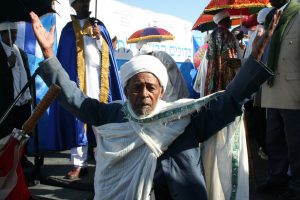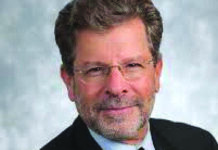
For many Jews, the evening of Nov. 22 is just a quiet Tuesday night, but for Ethiopian Jews in Israel and the Diaspora, Nov. 22 is the beginning of Sigd, a pilgrimage holiday holy to the Beta Israel community.
Celebrated 50 days after Yom Kippur on the 29th day of Cheshvan, Sigd is the commemoration of the day God was revealed to Moses and means “worship” or “prostration” in the Ethiopian liturgical language of Ge’ez, according to My Jewish Learning.
Living in isolation from other Jewish communities, Ethiopian Jews observe Sigd as a longing to visit Israel and the Temple. However, from the 1970s to the early 2000s, following a coup d’etat in Ethiopia, Israel began airlifting Ethiopian Jews to Israel. As of 2021, more than 160,000 Ethiopian Jews live in Israel, according to the Israel Central Bureau of Statistics.
With more Beta Israel living in their promised land or immigrating to the United States, the holiday of Sigd, once representing a yearning of a singular, isolated people, has come to be celebrated in a multitude of ways, largely depending on the age and location of the person celebrating.
Though the holiday’s origins are unclear — there’s some documentation to suggest it began in the sixth century following a Jewish-Christian war and other accounts dating to a religious war in the 1400s, according to the Museum of the Jewish People — Sigd is typically celebrated with prayers, fasting and an evening break fast.
In Ethiopia, Jews don white and ascend a mountain, symbolizing a similar ascent of the Israelites up Mount Sinai. This tradition is one of the few memories Sigal Kanotopsky, Lower Merion resident and Northeast regional director for the Jewish Agency for Israel, has of her home country before she arrived in Israel at age 5.
“If Yom Kippur is about individual aspects or focused on individuals, then [Sigd] is a communal Yom Kippur,” Kanotopsky said. “Meaning, you combine efforts, community efforts, with a day of purity, prayers and yearning and longing to our desire for Zion and to really unite with our brothers and sisters in Jerusalem.”
As a child, the yearning Kanotopsky and her family felt to arrive in Jerusalem was literal. Today, however, for many Beta Israel in Israel, the holiday has taken on a more metaphorical significance.
“In a way, while our dream of getting to the geographical Jerusalem and the physical Jerusalem came true, I think we are still in the process, and we have a great [amount] to do to get to the conceptual Jerusalem of living in a healthy and reformed society that is accepting of everyone, and everyone has his or her own place in the mosaic in society or in world Jewry.”
Israel began recognizing Sigd as a national holiday in 2008 after decades of only tenuously accepting the influx of Ethiopian refugees. National acknowledgment of Sigd represented a step in embracing Beta Israel and marked a shift in the tone of the holiday.
Mari Beza, University of Pennsylvania Hillel’s Israel fellow, has spent 22 of her 27 years in Israel, where she’s observed rabbis and older generations of Ethiopian Jews take part in a day of fasting and prayers on Sigd. But to her generation, the holiday is a time of reunion with friends and family with a large ceremonial meal of dabo, a fragrant yeasted honey bread, being served alongside an Ethiopian meal with injera.
While the older generation holds on to some of the somberness of the holiday, remembering a time of their own yearning or struggle arriving in Israel, the younger generation is filled with feelings of spiritual and physical arrival to the land of milk and honey.
“It’s kind of become a half-fasting and then half-celebration,” Beza said. “We no longer need to pray to get to Jerusalem because we made it.”
For Ethiopian Israeli Jews in America, however, the observance of Sigd looks significantly different. Kanotopsky and Beza will fast and break their fasts in the evening, but their celebratory dinners will consist of dining with family in Kanotopsky’s case, and with a group of students from UPenn’s Ethiopian Eritrean Student Association in Beza’s.
In the short time Kanotosky and Beza have been in the United States, there has been a desire from their American Jewish counterparts to learn more about Sigd.
Beza believes that the Jews in the U.S. have taken to learning about Ethiopian Jewish culture more quickly than Israeli Jews — symbolic of a greater acceptance of Jewish plurality.
“There’s a lot of excitement and maybe desire to know this community, more here to American Jews than maybe in Israel because it’s something that they don’t really know or are used to,” she said. “American Jews are kind of really excited about it, that there are Jews that not only look like them, [but] there’s a lot of Jews that look different than them.”






